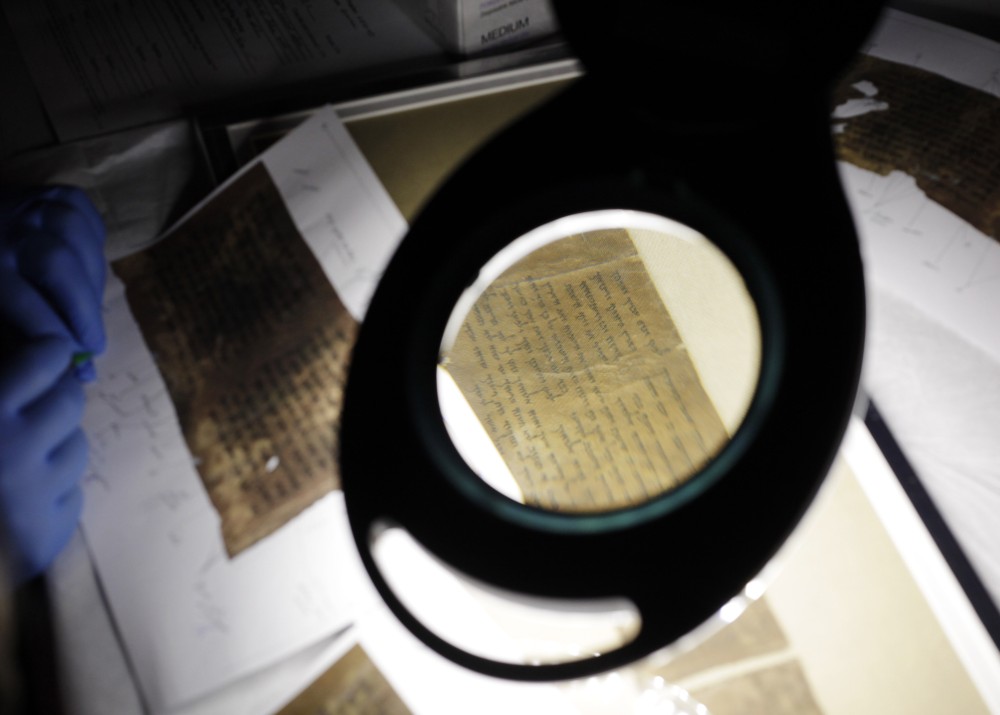Dead Sea Scroll fragments at Museum of the Bible found to be forged
Close to 70 items that have come on the market since 2002 as Dead Sea Scroll fragments appear to be suspect, one scholar said.

Since its grand opening a year ago, the Museum of the Bible has exhibited five fragments from the storied Dead Sea Scrolls, the ancient parchment fragments discovered 70 years ago in a desert cave.
In late October, the museum acknowledged that the five fragments it had on display were forgeries. They were taken down several weeks ago and replaced with three other fragments that do not have the same anomalies.
The museum had long suspected the fragments might be forged, and a sign accompanying the exhibit says scholars had raised questions about their authenticity. The scroll fragments underwent three rounds of investigation to verify their provenance, handwriting style, and the relationship between the parchment and ink. After the third round, considered the best determinant of authenticity, the museum received the results of digital and X-ray testing of the ink, sediment layers, and chemical composition, which proved conclusively that the fragments were forged.





